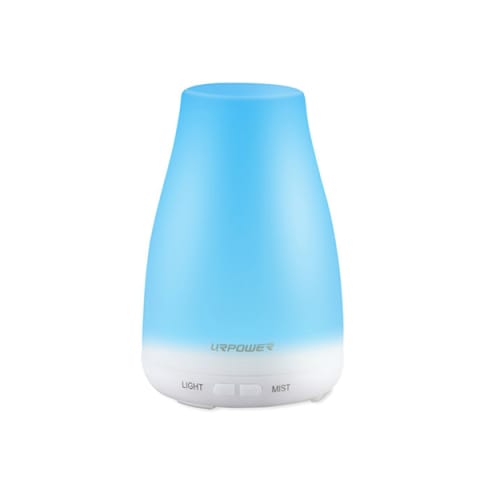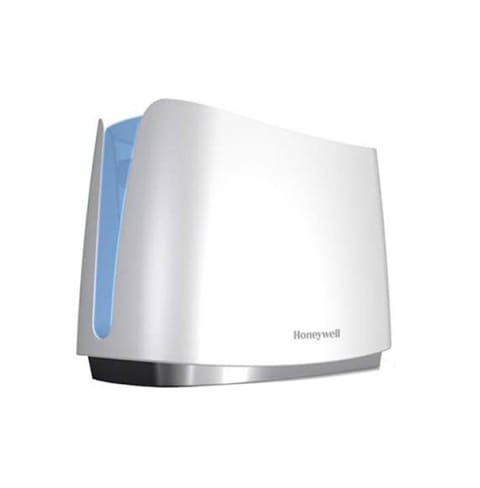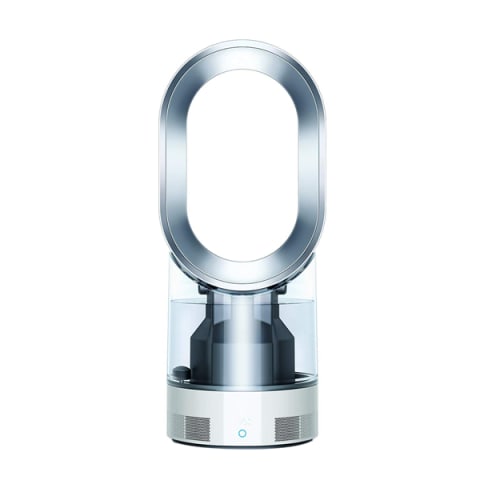Your Home’s Humidity May Be The Root Of Your Health Issues—Here’s How To Check It

Did you know that humidity is actually a huge indicator of the health of your home? According to Aviad Elgez, N.D., a naturopath focused on environmental toxicology, if it doesn't fall into the 40 to 50 percent range, you run the risk of breathing air that is either too dry, which could cause respiratory irritation, or too damp (hello, mold).
To ring in the holiday season and the start of lots of snuggly time indoors with friends and family, we're breaking down the basics of healthy moisture levels at home. And no, we won't judge you for putting a humidifier on your Christmas list this year.
Before we get started: How do I even measure the humidity in my home?
Most homes have a humidifier in the furnace, which should give you an idea of humidity—but only in that one area. Humidity levels will change, however, depending on what room you're in due to factors like insulation and air flow from windows and fans. That means it's a good idea to invest in a portable humidity meter that you can carry around your whole home. It'll only set you back around $10 to $20, and you can find them online and in most home goods stores.
When you've got your meter and are measuring humidity in each room, don't forget about the bathroom! Elgez says that while most bathrooms have built-in ventilation, or fans, these days, the ones that don't are poised for high humidity and mold growth. "I've had many patients getting sick living in an apartment that doesn't have a fan or window in the bathroom," he says. "They would complain it was very damp and moldy."
What should I do if my air is too humid?
According to Elgez, once you hit a humidity level of 60, you run the risk of getting mold, and just because you don't see it doesn't mean it's not there.
"A lot of people think black mold is the one to worry about, but it turns out there are a lot of different species of mold that could grow at home," he says. "White mold, Aspergillus, can actually be more toxic depending on what species it is." While black mold requires about 90 percent humidity to grow (that's why you'll usually see it in eternally damp places like the shower or windowsill), white mold, which you usually need a microscope to see, can survive at about 60 to 70 percent humidity.
But don't freak out: If a room's humidity is approaching the danger zone, a small dehumidifier will probably do the trick to bring it back down to normal levels. There are tons of options on the market these days; just keep in mind that some are noisier than others if you're placing it in a bedroom.
If you're concerned that your home has a mold problem, either because you can see it growing or you are experiencing symptoms of mold exposure like headaches and chronic fatigue, you're going to want to call in an expert to test the air quality.
"Air sample testing is one of the best things you can do—that's when they look for spore counts," Elgez explains. "It's a little tricky, so you really want to make sure it's done properly. If you have a positive spore count, there's a species growing there." Pro tip: If a room has that musty scent that you'd associate with an old basement, Elgez says it likely has mold: "Nothing really produces that smell. It's a big red flag."
What should I do if it's not humid enough?
Having eternally dry air at home isn't dangerous, but it's just plain uncomfortable and could lead to respiratory irritation, nose bleeds, dehydration, and the like. If your air clocks in at under 40 percent, it's time to look for a humidifier. Elgez recommends staying away from ones that use hot water because they're more likely to attract mold, recommending Sonic cold-air models to his patients instead
What are some good humidifiers out there?
URPower
If you're looking for a budget friendly option, this one costs less than $20, has a cult following on Amazon, and doubles as an essential oil diffuser. Plus it's small and quiet, making it a good choice for a living room.
URPOWER Essential Oil Diffuser Humidifier ($16.99)
Honeywell
This well-priced cool mist humidifier runs for up to 24 hours without needing a refill, so it's a nice option for a bedroom or somewhere else where you'll want to just set it and forget it. It also kills germs in the air using UV-light technology.
Honeywell Germ Free Cool Mist Humidifier ($77.96)
Dyson
And for those of you who are committed to perfectly humid home no matter the cost, this Dyson model is the apex of air cleaning. It reportedly kills 99.9 percent of bacteria, and it's certified asthma and allergy friendly by the Asthma and Allergy Foundation of America. Plus, it runs without a peep.
Dyson AM10 Humidifier ($399)
What are some good habits to keep humidity levels steady at home?
Once you pinpoint rooms that tend to fall outside the recommended range, you can balance out their humidity by adopting a simple habit: Open the windows after it rains to bring humidity levels up, or do it on a drier day and watch them go down. This is a nice routine to get into for overall air quality too (as long as you don't live in a super-polluted area), since outdoor air actually tends to be cleaner1, and maintaining a steady airflow will help keep things fresh at home.

Emma Loewe is the Sustainability and Health Director at mindbodygreen and the author of Return to Nature: The New Science of How Natural Landscapes Restore Us. She is also the co-author of The Spirit Almanac: A Modern Guide To Ancient Self Care, which she wrote alongside Lindsay Kellner.
Emma received her B.A. in Environmental Science & Policy with a specialty in environmental communications from Duke University. In addition to penning over 1,000 mbg articles on topics from the water crisis in California to the rise of urban beekeeping, her work has appeared on Grist, Bloomberg News, Bustle, and Forbes. She's spoken about the intersection of self-care and sustainability on podcasts and live events alongside environmental thought leaders like Marci Zaroff, Gay Browne, and Summer Rayne Oakes.


